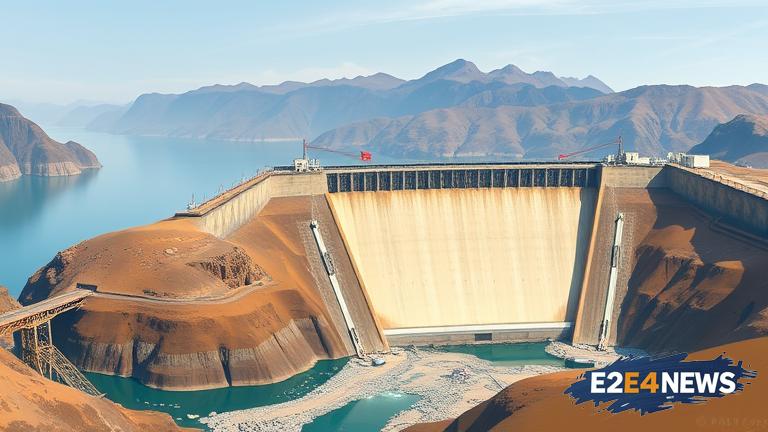The Brahmaputra River, one of the largest rivers in Asia, flows through China, India, and Bangladesh, supporting a vast array of ecosystems and human settlements. China’s plans to build a mega dam on the river have raised concerns in India, with many fearing the project could disrupt the natural flow of the river, affecting the livelihoods of millions of people. The dam, which is expected to be one of the largest in the world, will be constructed in the Tibet Autonomous Region, where the river is known as the Yarlung Tsangpo. The project has been in the works for several years, with China’s National Energy Administration approving the plan in 2020. The dam is expected to have a capacity of 60 gigawatts, making it one of the largest hydroelectric power plants in the world. However, the project has been met with opposition from environmental groups and local communities, who fear the dam will disrupt the natural flow of the river, causing irreparable damage to the ecosystem. The Brahmaputra River is home to a wide variety of fish species, including the endangered golden mahseer, and supports a significant portion of India’s agricultural production. The dam could also affect the river’s sediment load, which is essential for maintaining the fertility of the soil in the downstream regions. Furthermore, the project has raised concerns about the potential for increased flooding in the region, as the dam will alter the natural flow of the river. India has expressed concerns about the project, with the government stating that it will monitor the situation closely. The Indian government has also sought clarification from China on the project, citing concerns about the potential impacts on the environment and the livelihoods of people living in the downstream regions. The project has also sparked concerns about the potential for increased tensions between India and China, with some fearing that the dam could be used as a tool for geopolitical leverage. The Brahmaputra River is a highly sensitive issue in India, with many regarding it as a matter of national security. The river flows through the states of Arunachal Pradesh and Assam, which are both located in the northeastern part of the country. The region is already prone to flooding, and the dam could exacerbate the problem. The Indian government has been working to strengthen its relationships with other countries in the region, including Bangladesh, in an effort to counterbalance China’s growing influence. The project has also raised concerns about the potential for increased Chinese influence in the region, with some fearing that the dam could be used to exert control over the water resources of the downstream countries. The Chinese government has stated that the project is intended to provide clean energy and support economic development in the region. However, many in India remain skeptical, citing concerns about the potential impacts on the environment and the livelihoods of people living in the downstream regions. The project has sparked a heated debate in India, with many calling for the government to take a stronger stance against the project. The Indian government has stated that it will continue to monitor the situation closely and will work to protect the interests of the country. The project has also raised concerns about the potential for increased cooperation between India and other countries in the region, including Bangladesh and Nepal. The Brahmaputra River is a highly complex issue, with many different stakeholders and interests involved. The project has sparked a wide range of reactions, from concerns about the potential impacts on the environment to fears about the potential for increased tensions between India and China.





